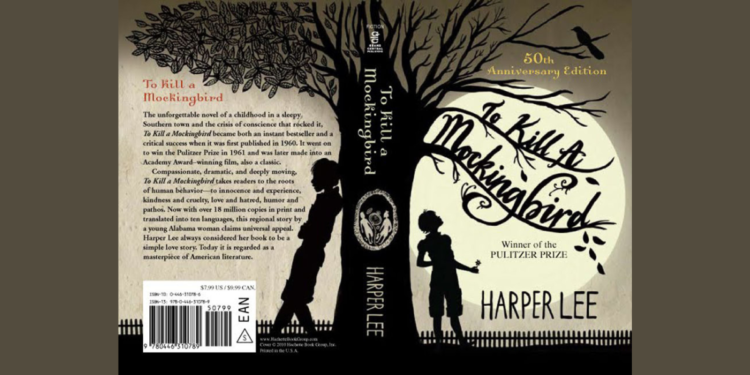Certainly, “To Kill a Mockingbird” by Harper Lee is a literary classic that has been celebrated for its timeless themes, unforgettable characters, and profound social commentary. This review will delve into the various aspects of the novel, discussing its historical context, character development, plot, themes, and its enduring relevance in contemporary society.
Historical Context and Setting: “To Kill a Mockingbird” is set in the 1930s, in the fictional town of Maycomb, Alabama. The novel is deeply rooted in the historical context of the American South during this period, a time characterized by racial segregation, economic hardship, and societal injustice. Lee uses this backdrop to explore the deeply ingrained racism and discrimination that permeated Southern society.
Character Development: Harper Lee’s characterization in the novel is one of its most remarkable features. Scout Finch, the young and observant narrator, provides readers with a child’s perspective on the world around her. Her innocence and curiosity make her a relatable and endearing character. As the story progresses, we see her growth and maturation as she begins to understand the complexities of human nature and the harsh realities of racism.
Atticus Finch, Scout’s father, stands out as one of literature’s most noble and principled characters. He serves as a moral compass throughout the novel, defending Tom Robinson, a black man falsely accused of raping a white woman, despite the social backlash he faces. Atticus’s unwavering commitment to justice and morality sets a powerful example.
Another pivotal character is Boo Radley, a reclusive neighbor who becomes the subject of fascination and curiosity for Scout, her brother Jem, and their friend Dill. The evolution of Boo’s character from a mysterious figure to a symbol of compassion and empathy underscores the novel’s central themes.
Plot and Themes: The novel’s plot revolves around the trial of Tom Robinson, an African American man accused of raping Mayella Ewell, a white woman. The story is narrated by Scout, who provides an intimate view of the events. The trial serves as the central narrative, but it is a vehicle for exploring several enduring themes:
- Racism and Injustice: “To Kill a Mockingbird” addresses the pervasive racism and prejudice that characterized the American South during the 1930s. The trial of Tom Robinson exposes the deep-rooted racism in Maycomb, where a fair trial for a black man is virtually impossible. It highlights the systemic injustice faced by African Americans.
- Morality and Empathy: Atticus Finch embodies the moral core of the novel. His belief in empathy and the inherent goodness of people sets a high standard for ethical behavior. The novel encourages readers to consider the world from others’ perspectives and to practice empathy.
- Loss of Innocence: As Scout and Jem grow up and experience the world’s complexities, they lose their innocence. The novel illustrates the inevitable loss of childhood innocence when confronted with the harsh realities of prejudice, cruelty, and injustice.
- The Mockingbird Symbol: The mockingbird serves as a powerful symbol throughout the novel. It represents innocence and the idea that harming something pure and harmless, like a mockingbird, is a great moral sin. This symbol is central to the book’s title and its themes.
- Gender Roles: The novel also subtly addresses the societal expectations and gender roles of the time, particularly through the character of Scout, who challenges conventional notions of femininity and girlhood.
Enduring Relevance: While “To Kill a Mockingbird” is deeply rooted in its historical context, its themes and lessons continue to resonate in contemporary society. The novel’s exploration of racism and injustice remains relevant, as societies around the world grapple with issues of systemic discrimination and inequality. The call for empathy, understanding, and the importance of moral character are timeless.
Atticus Finch’s principled stand against racism and injustice serves as a model for those who seek to fight for a more just and equitable world. The novel encourages readers to question their own beliefs and prejudices and to strive for a society where empathy and compassion prevail over hatred and discrimination.
In addition, the loss of innocence theme remains pertinent, as individuals and societies confront the harsh realities of the world, especially in the face of global challenges and adversity. “To Kill a Mockingbird” urges us to confront these challenges with a sense of moral responsibility and a commitment to justice.
The mockingbird symbol, with its message of the moral imperative to protect the innocent, is a call to action for us to safeguard those who are vulnerable and marginalized in our societies. This symbol is a powerful reminder of the enduring importance of standing up for what is right.
Impact and Controversies: “To Kill a Mockingbird” has had a significant impact on literature, popular culture, and social consciousness. It has won numerous awards, including the Pulitzer Prize for Fiction in 1961, and has sold millions of copies worldwide. The novel has been adapted into a successful film and a Broadway play.
However, it’s important to acknowledge that the novel has also faced controversy and criticism. Some readers and scholars have pointed out issues with the white savior trope, where a white character, in this case, Atticus Finch, is seen as the heroic figure in the fight against racism. This perspective has led to discussions about the limitations of the novel’s portrayal of racial issues.
Furthermore, Harper Lee’s portrayal of African American characters in the book has been criticized for not fully developing their perspectives and experiences. Some have argued that the novel, while addressing racial injustice, may not go far enough in portraying the depth of the African American characters’ lives.
Despite these criticisms, “To Kill a Mockingbird” continues to be a celebrated and influential work of American literature. It remains an essential text for discussions on race, morality, and justice in the United States and beyond.
In Conclusion: “To Kill a Mockingbird” is a literary masterpiece that continues to resonate with readers of all ages. Its powerful themes, memorable characters, and enduring relevance make it a work of enduring significance in the realm of literature. Harper Lee’s novel serves as a reminder of the ongoing struggle for justice, the importance of empathy, and the necessity of protecting the innocent, making it a timeless classic that will continue to be studied and cherished for generations to come.









